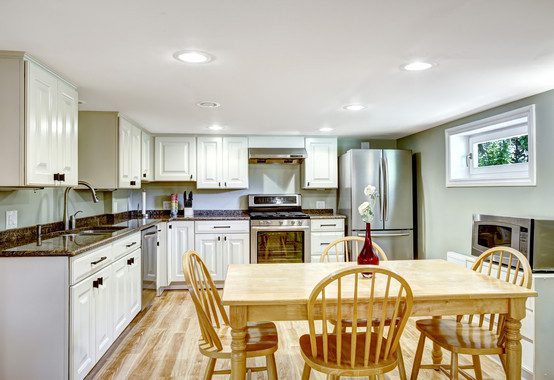How to Build Housing From the Middle Out

Durango, Colorado is synonymous with the rugged American West for many, as the border town of 16,000 advertises its historic trails and cowboy classes, while Dodge continues to summon its name in countless rough-voiced commercials for the eponymous sport-utility vehicle.
The District of Columbia, on the other hand, could easily be seen as Durango’s cultural opposite—an entirely urban area of 670,000 centered around the federal government, with a long history of messy racial politics and tensions currently flaring up against the influx of millennials seeking craft cocktail bars.
When it came to solving affordable housing crunches, however, the District and Durango came to the same conclusion: they needed more units of housing, with minimal neighborhood disruption. They needed accessory dwelling units (ADUs), more popularly understood as “renting out your basement or garage.”
While the subject of a popular HGTV show set in Canada, these “income properties” are much more difficult to come by in the United States, as decades of tightening zoning codes have usually squeezed homeowners’ options for renting part of their house. As Anthony Flint reports, Durango itself encountered stiff resistance when loosening its own codes, as pilot neighborhoods fought bitterly against the prospect of an extra couple people being squeezed onto a single-family residence’s plot of land.
That famed Western libertarianism apparently did not extend to what neighbors did with their own homes.
Flint notes that Massachusetts was much the same when he tried to leverage ADUs to open up ready-made affordable housing in that state while serving under Gov. Mitt Romney: “Fueled by NIMBYism and concerns about density and school enrollment and parking and congestion, cities and towns wrote reams of codes requiring that property owners prove any occupants of ADUs were actually related.”
Washington, D.C. made significant strides on the issue earlier this year when it passed reforms to its zoning code that greatly liberalized the rights of homeowners to bring in supplemental income from their property. In a city whose housing prices have been skyrocketing, that is a non-negligible change for homeowners trying to stay in their neighborhoods.
As Emily Brown reported for Greater Greater Washington, the classic “English basements” below rowhouses are changing from requiring a special exemption to being available “by right” of the homeowner. Likewise, building an accessory unit in an external building (like a garage or carriage house) that already exists will also be considered possible “by right”, and building new structures has moved from requiring strenuous variances to mere special exemptions. All-in-all, the famously frozen District found a way to open up significant potential affordable housing opportunities without so much as grazing any height limits.
And as Flint relates, Durango offers hope to housing markets in less extreme circumstances than Washington, too. For after all the protests and resistance from locals, the planners were able to see their proposal through to completion, under a few restraints. The power of the neighborhood to block such changes is so widely recognized that when the Durango planners gave a briefing on their success at a national conference, the room was packed, and questioners lined up behind the microphone to seek advice.
Restoring homeowners’ right to rent part of their property is one of the small, incremental changes that communities can make to expand their housing markets even if they are wary of massive apartment complexes. Indeed, it is a fine example of how increases in “density” can frequently mean anything but the oft-feared “Manhattanization” of an area.
Accessory apartments are part of the “Missing Middle” between strict single-family homes and tall urban apartment towers. So towns and cities looking to accommodate growing populations without aesthetic disruption need only to start in the middle.
Jonathan Coppage is senior staff editor of The American Conservative. “New Urbs” is supported by a grant from the Richard H. Driehaus Foundation.
Comments